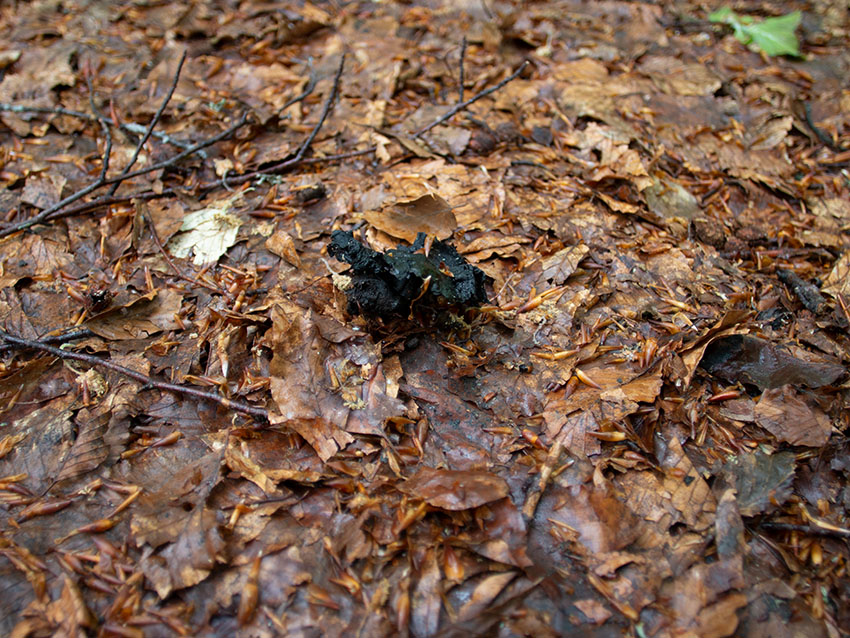
The diet of bears in the first part of the summer consists primarily of herba- ceous plants. Among these one can observe stems and leaves of forest herbs, corymbose plants such as thistles, French willow, Carpathian sorrel and others. At this time they apparently prefer to scratch the trunks of spruce and firs. In June, 1972, we observed bears strip off sequential pieces of bark, lick the sap and gnaw the exposed bast fiber with their teeth. Based on evidence of excava- ted ant hills and traces of wasps, it is concluded that in June bears are active in more open spaces where they also find and eat rich greens. In the second half of the summer the diet of the bears still contains herbaceous matter as well as whortleberries, strawberries, and later bilberries and green vegetation. Along In the event of an insufficient berry supply, the bears will raid gardens, disperse through orchards, where for some weeks they will feed on bullace, plums, apples and pears; in doing this, they cause extensive damage to trees. Autumn is the most important period for bears since it is at this time that they complete the buildup of their fat reserves. In September plants coarsen, be- come less palatable and are rarely found in the bears' diet. At this time the bears collect the remaining raspberries and whortleberries; they eat mature blackberries, mountain ash, fruits of wild apples and pears, blackthorn and dog rose. In high mountain regions they migrate to the upper zone of the coni- ferous forest and subsist basically on whortleberries. Closer to winter the diet is reduced in variety and the bears consume bil- berries, whortleberries, Sorbus spp., apples, willow, blackthorn, dog rose, etc.
In the Carpathians during the first part of January the blind, scantily furred cubs are born; they weigh 450 to 500 g. When they leave the den, they weigh almost two kg. The female gives birth to two cubs; one or three occurs rarely, and the birth of four cubs in the Carpathians is extremely rare. Upon encount- ering humans, the female deserts her den. The cubs left by their mother in heavy frost die within 15 to 20 minutes. Such a case occurred on 22 January 1971, on one hunting preserve. Some bears in the Carpathians will winter in one den repeatedly over a period of several successive years. New openings in a majority of cases are made by young animals. Frightened out of its den in the winter, one Carpathian bear refused to go back; the next year it proceeded to winter in a different place near the limits of its usual range. The agitated animal did not return to hiber- nation and traveled approximately 10 km in search of food; it stopped periodi- cally to rest on the snow, breaking off dry branches and some standing trees. If, at that time, there had been a heavy snow (60 to 80 cm) as sometimes occurs in the Carpathians near the end of winter, the bear would likely have been forced to stay in its lair maintaining itself on fat reserves. If the bear re- mains undisturbed, it will sleep all winter and maintain a positive daily temperature because of the layer of fat. In the Carpathians denning commonly lasts until the middle of March or the first of April; the period of emergence from the dens lasts 5 to 12 days.